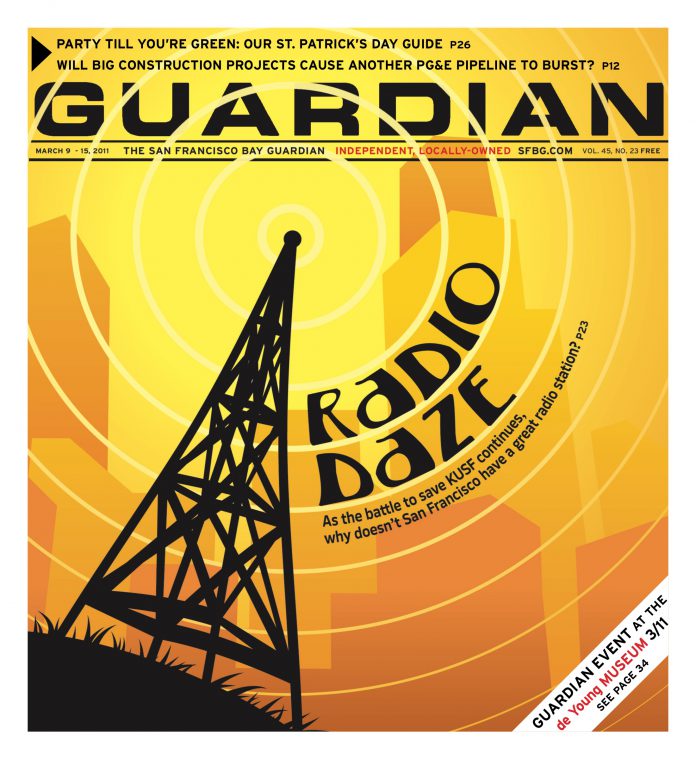GAMER For a second there, the mighty PR machine seemed poised to devour the Game Developers Conference. The communal, feel-good GDC was built on sharing ideas, and in recent years the modest think tank had grown exponentially, as established game developers and publicity houses descended on downtown San Francisco with glossy preview events and headline-stealing announcements that previewed things to come at the summer E3 expo. However, this year the most talked-about events weren’t the off-site previews, but the conference-organized developer sessions, a phenomenon that marked a return to the sentiments that inspired the conference in the first place.
Big-name developers like Peter Molyneux, head of Lionhead games and lead developer of Fable; Cliff Bleszinski, design director of Epic games and spokesman for the Gears of War franchise; The Sims creator Will Wright; Doom honcho John Romero; and outspoken French impresario David Cage were just a few of the draws in the “classroom” area of Moscone Center. While these industry giants lectured about their experiences in the industry and gave postmortems on their classic games, the notion was that they were speaking directly to a generation of developers who might one day become successors — or even competitors.
Inspirational stories were the highlight of the conference, but a handful of games were happy to share the spotlight. And one game set out to draw maximum attention to its upcoming release by staging a controversial rally in Yerba Buena Gardens and releasing hundreds of red balloons over the downtown area. With its near-future shooter Homefront releasing in just a week, publisher THQ embarked on the biggest media push so far this year. In addition to the balloons and the rally (themed like an anti-North Korea rally, complete with posters of Kim Jong Il, a diagonal line through his face and the words “Game Over North Korea”), THQ shuffled press into a themed event with barbed wire, smoke machines, and stony-faced Korean soldiers. With publicity like that, it’s almost beside the point how the game plays, but let’s say it’s largely familiar.
Other attempts to stay relevant came in the form of Uncharted 3, whose developers showed the previously-seen “burning chateau level,” this time showcasing the game’s 3-D feature and an additional story-driven animatic that promises the game will be as blockbuster an experience as its predecessors. Battlefield 3 held an impressive “reveal event,” though the game had been partially revealed weeks earlier in Game Informer magazine. The game has wonderfully realistic animations, but the event itself was designed to draw attention to its Battlefield Play4free online shooter, which offers free FPS gameplay if you don’t mind a microtransaction or two.
With most of the game previews having been seen before, it was nice to see a few publishers making their debuts at the conference, such as The Darkness II, which proved that interactive storytelling has a place, even in a post-Heavy Rain marketplace. With musician Mike Patton returning for vocal duties, the sequel mixes gunplay with gruesome “quad-wielding” tentacle murder and an original, hand painted graphics style. Also making a gameplay debut was Batman: Arkham City, which looks to improve on Arkham Asylum‘s successes in nearly every category and with an attention to detail sure to please gamers and comic aficionados alike.
The conference buzzed with goodwill for the industry shift toward indie and mobile gaming, a revolution that meant a much larger contingent of attendees were likely to already identify as genuine developers. In the conference keynote, Nintendo president Satoru Iwata explicitly noted the shift, in the midst of a surprisingly defensive presentation that attempted to downplay the success of casual game developers and situate Nintendo’s place in the past and present of social gaming. If there’s one thing to take away from the keynote, and the 2011 conference as a whole, it’s the industry shift from conglomerate to individual. Nintendo’s threatened stance, and Microsoft’s noticeable absence, indicates a move toward dividing the industry just as gaming stands to enjoy unprecedented appeal in the form of casual gaming. In a world where anyone with a good idea can make a successful game, we might be looking at a return to the exciting, anything-goes Wild West atmosphere that marked gaming’s birth in the 1970s and ’80s. For an industry that could use a few paradigms shifted, it’s the best news yet.

